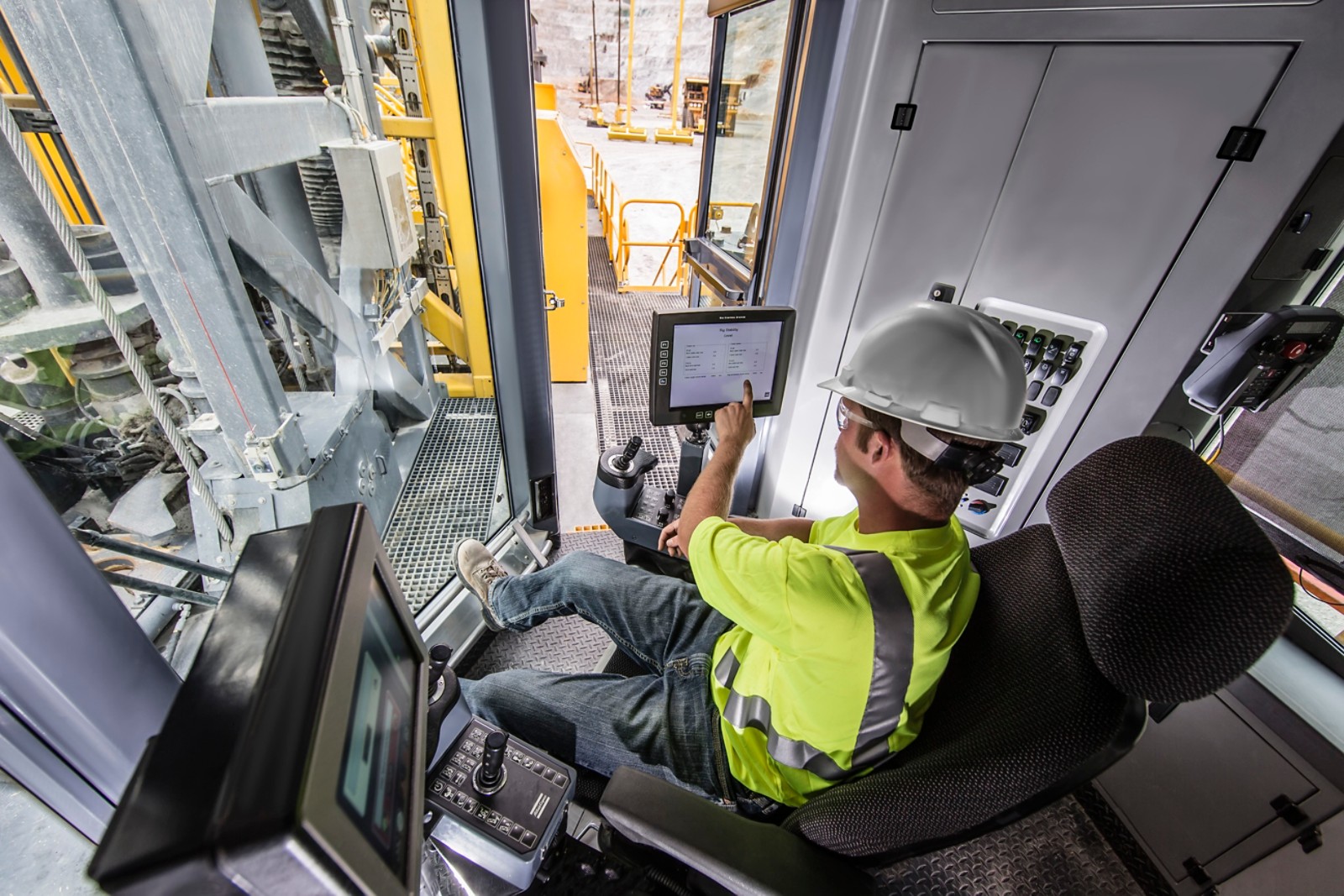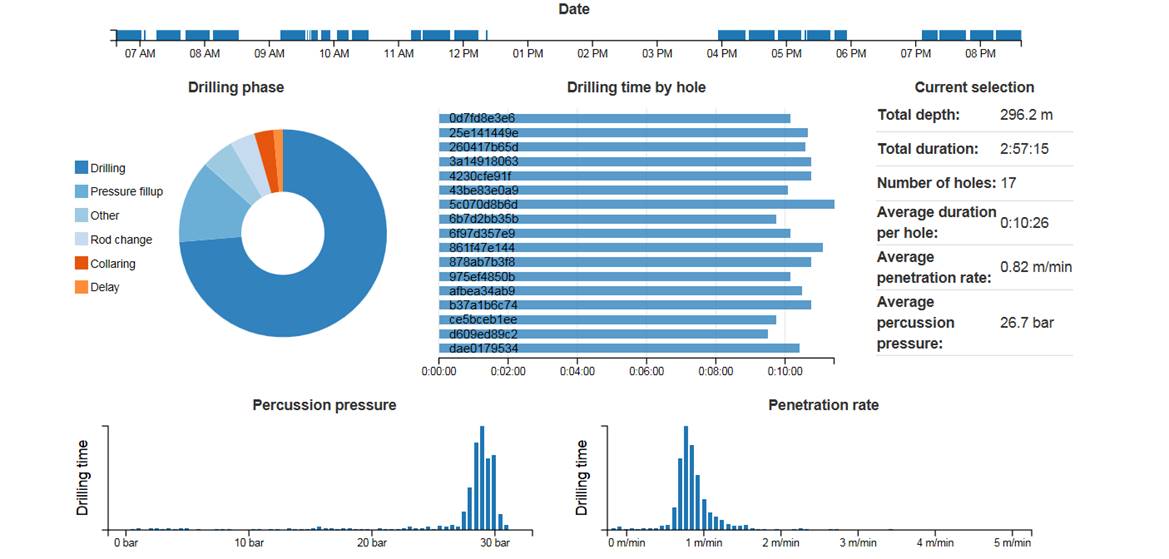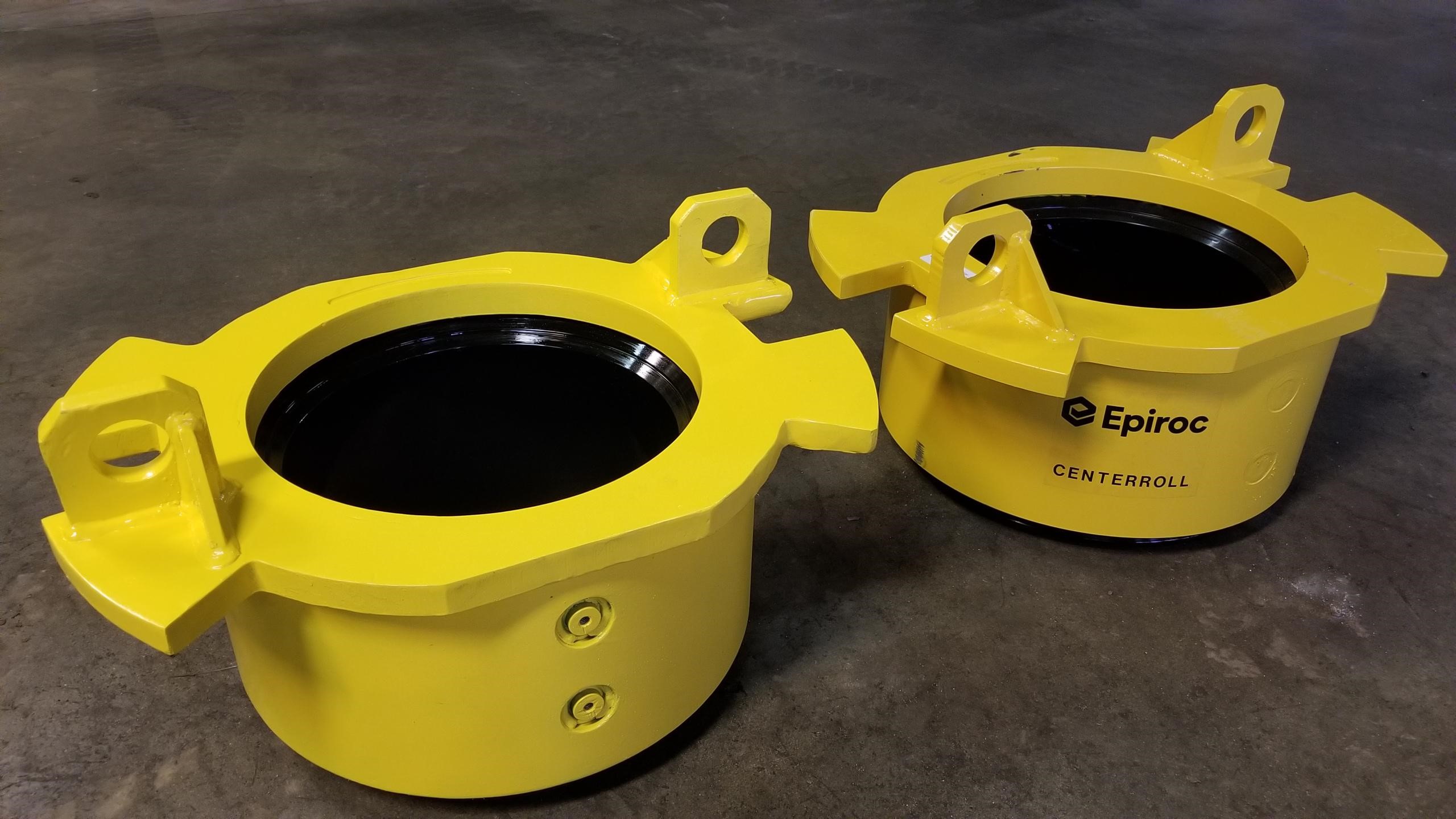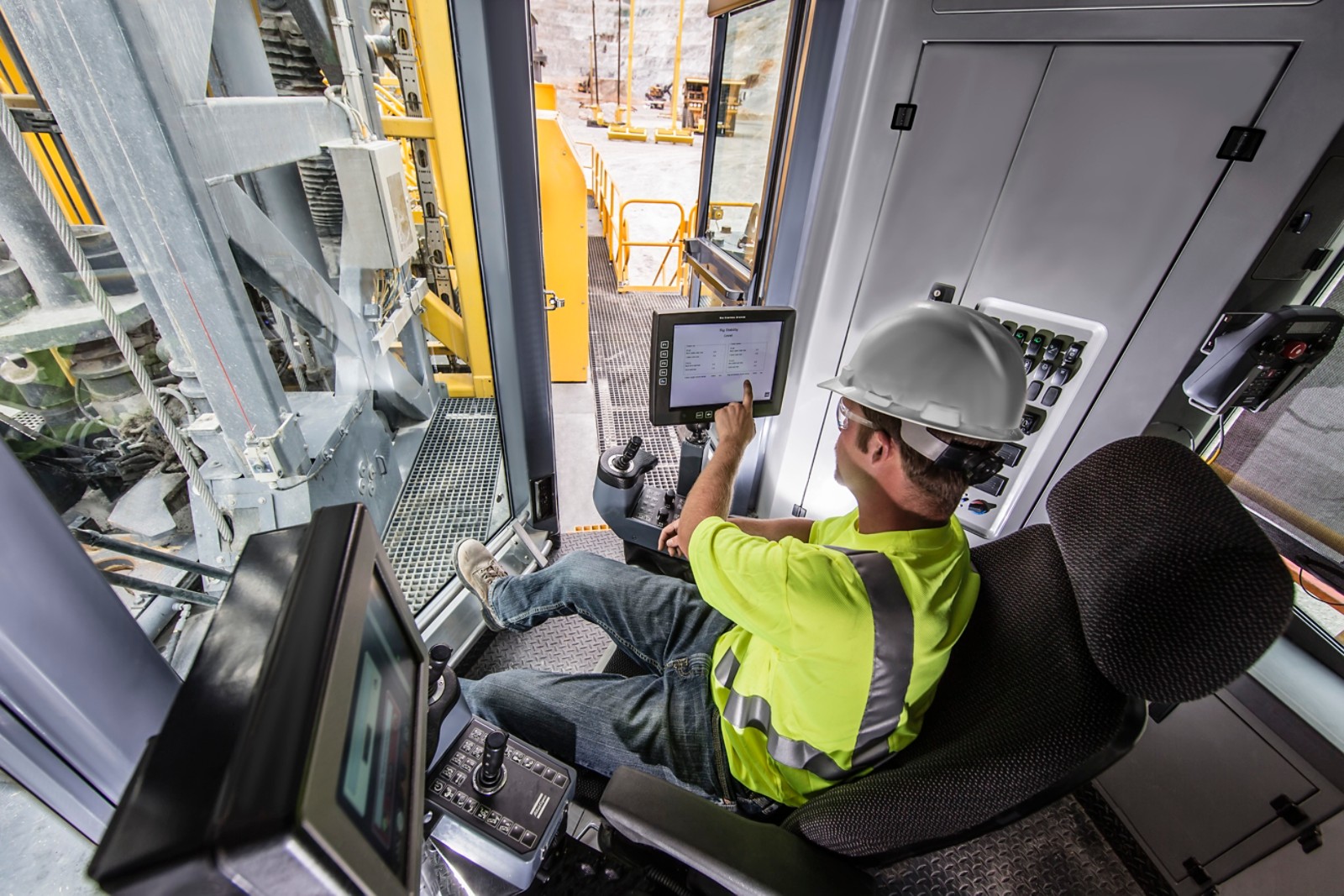Implementing automation into mining operations is a big endeavor. As companies work to figure out how to make the most of autonomous drilling, tooling is not always a focus. But it’s important for mine managers to consider that rotary tooling products are evolving to help unlock the full potential of autonomous drilling — and that optimized tooling should be an integral part of any automation implementation plan.

The Epiroc Rig Control System (RCS) allows monitoring of drill sting component life and performance in real time from the cab or -- in the case of fully autonomous operation -- from the remote management center.
Cost per foot vs. total drill cost
Historically, mining companies have looked at cost per foot drilled — cost divided by the product’s average life in feet — when assessing the value of rotary tooling. However, the future of tooling is about total drill cost.
Unlike cost per foot, the total drill cost concept accounts for tooling’s impact on the total production cost of a machine over time. Total drill cost measures not only tooling product investment and longevity, but also the tooling’s contribution to production — penetration rate — and how it minimizes disruption to drilling activities.
This shift in focus from cost per foot to total drill cost makes sense for operations that utilize automation to enhance productivity, safety and predictability.
As an example, say you run a drill that is capable of moving point-to-point, drilling and changing rods all on its own. It essentially removes any lost productivity due to operator breaks but you still have to stop every four hours to change a drill bit. In this scenario, production will always fall short of its potential.
Now envision using a next-generation bit that delivers the same cost per foot but requires changing only once every eight hours. The additional 15 to 20 minutes drilling each shift may seem inconsequential but over the course of a month will result in considerable production gains and lower operating costs per ton produced in the long term.
Total drill cost is the way the mining industry is heading. It involves a commitment to working with customers on data and product integration with an ultimate goal of lowering that number.

Analysis of total drilling operations optimizes machine productivity and lowers total drill cost.
New products minimize disruptions and reduce risk
When developing rotary tooling for automation, total drill cost needs to be considered from the very initial stages of research and development. That means manufacturing with longer-lasting materials, developing new technologies and reducing the interaction required by mine personnel — all with the goal of minimizing costly drilling disruptions for our customers.
To illustrate this product design philosophy, here are a few examples from Epiroc:
- Next Generation Rotary drill bits.
Low-quality drill bits can compromise the productivity and efficiency of today’s increasingly complex and expensive drilling systems. Epiroc’s new rotary drill bits feature higher caliber materials, patented airflow technology to remove cuttings faster and cool bearings more effectively, and patented cutting structure upgrades for increased penetration rate and longer wear life.
While the up-front investment in Next-gen drill bits is greater than some competitive models, the new bits are designed for maximum rotating time per shift — leading to significantly lower total drill cost. In recent testing in the eastern U.S., Next-gen bits delivered penetration rates up to 20 percent better than their predecessors in the same ground conditions. These bits are ideal for companies looking to increase production by focusing on data-backed performance throughout the drill string. - The V-LokTM shock sub and clamp system.
Waiting for a welder with a permit can disrupt drilling activities for hours. Removing weld tabs can cause damage to shock sub housings and top subs. Epiroc’s V-Lok eliminates welding and the need for a hot permit, increasing productivity and safety. The no-weld clamp uses four bolts and washers to form a secure connection between the sub and the drill string. Available in 10 different sizes to fit any drill string size, this patented technology eliminates the need to wait for a certified welder and minimizes worker exposure to welding’s high heat and sparks.
To change the sub, personnel can simply remove the bolts and clamp. Because there’s no welding to potentially damage the sub, there’s also a greater chance that the sub can be reused. Welding the box end threads can lead to cracks and distortion that allow water and air leakage. Shocks with cracks on the box end threads cannot be repaired, requiring a new box thread to be fabricated for the used shock.
- TeamAlloy pipe and alloy deck bushings.
Lower quality drill pipe and deck bushings can raise total drill cost. Epiroc TeamAlloy pipe and deck bushings are made of alloy steel, which is harder and more wear-resistant than the mild steel used to manufacture some other products on the market. Alloy consumables perform better and last longer than less expensive alternatives, leading to a superior initial run and fewer costly drilling disruptions.
To add value for customers that use TeamAlloy pipe and alloy deck bushings, repairs can be an option. For instance, Epiroc runs a repair program for TeamAlloy pipe that is damaged or near the end of its life. In many cases, our pipe can be repaired for less than 75 percent of the cost of brand-new pipe and provide drillers 90 percent of the life of new pipe. Our alloy deck bushings are also repairable for a second life, often on-site on the tailgate of a pickup truck with simple tools.

Mines seldom track the consumption of deck bushings. As automation brings RFID technology into play, they will be better able to track consumption. Because an automated drill can recognize when a bushing went on and came off, bushing wear can be optimized. Proper bushing diameter enables the drilling of straighter holes, a more accurate blast pattern, and better fragmentation — all of which drive down total drill cost.
Tooling evolution will continue
As mining companies work to get the most out of their fleet, the value of longer life, automation-ready tooling should not be overlooked. Products like Next-gen bits, the V-Lok and TeamAlloy pipe and deck bushings are examples of the latest rotary tooling evolutions.
Development and testing are under way on more products that tie into a drill’s automation system and capture data from the drilling consumables for continuous improvement of operations. It requires diligence and commitment to provide tooling products and insights that help customers meet production targets at the lowest total drill cost.
About the author: Shawn Cheney is the Business Line Manager for Rock Drilling Tools at Eprioc USA. He takes great pride in his team who work endlessly to make customer operations efficient and predictable, not only in their drilling activities, but in their supply chain as well. Shawn has been involved in the drilling industry since 1997 and holds a Bachelor’s in Engineering and a Master’s in Business Administration.


